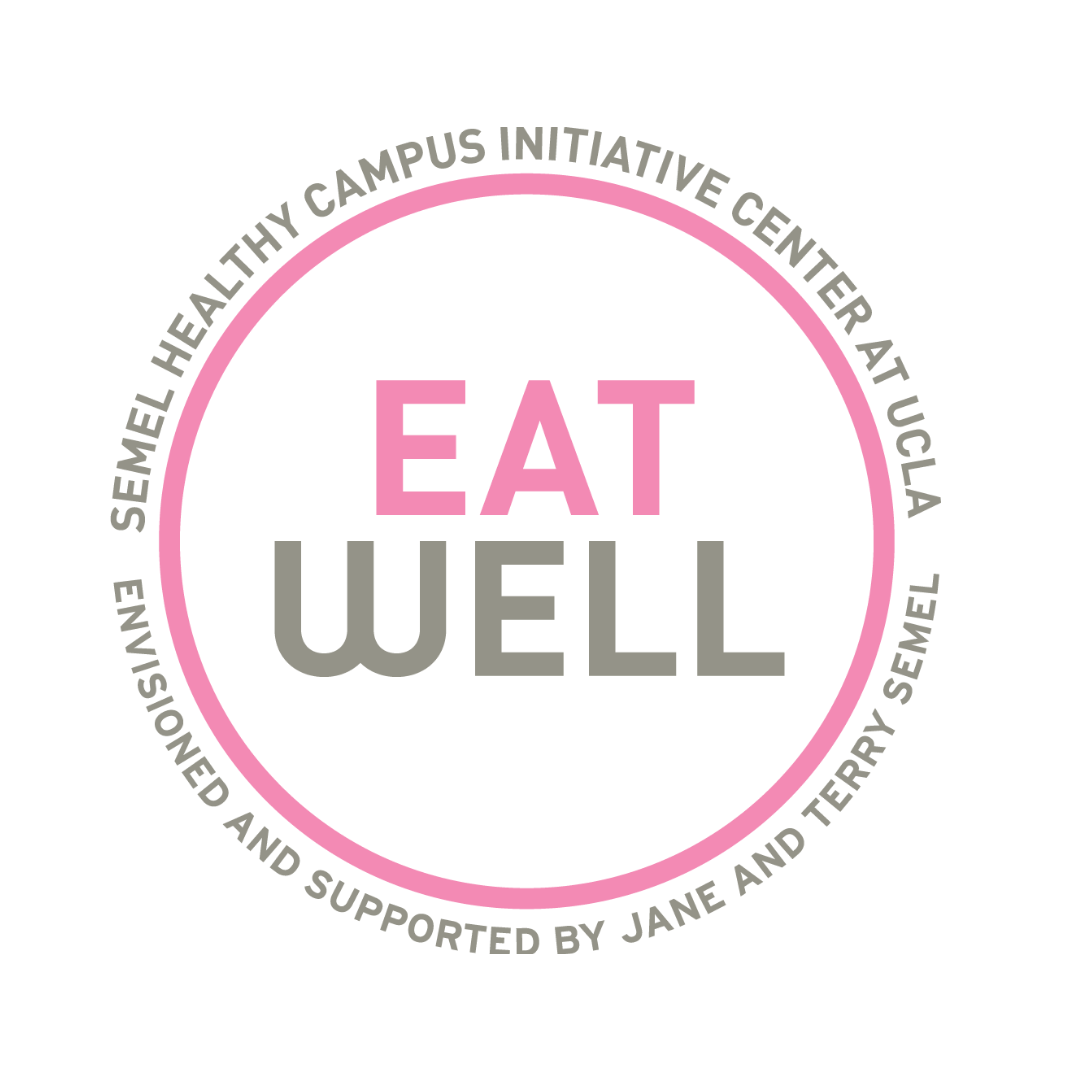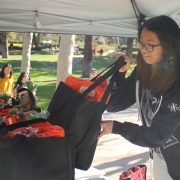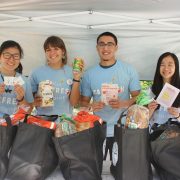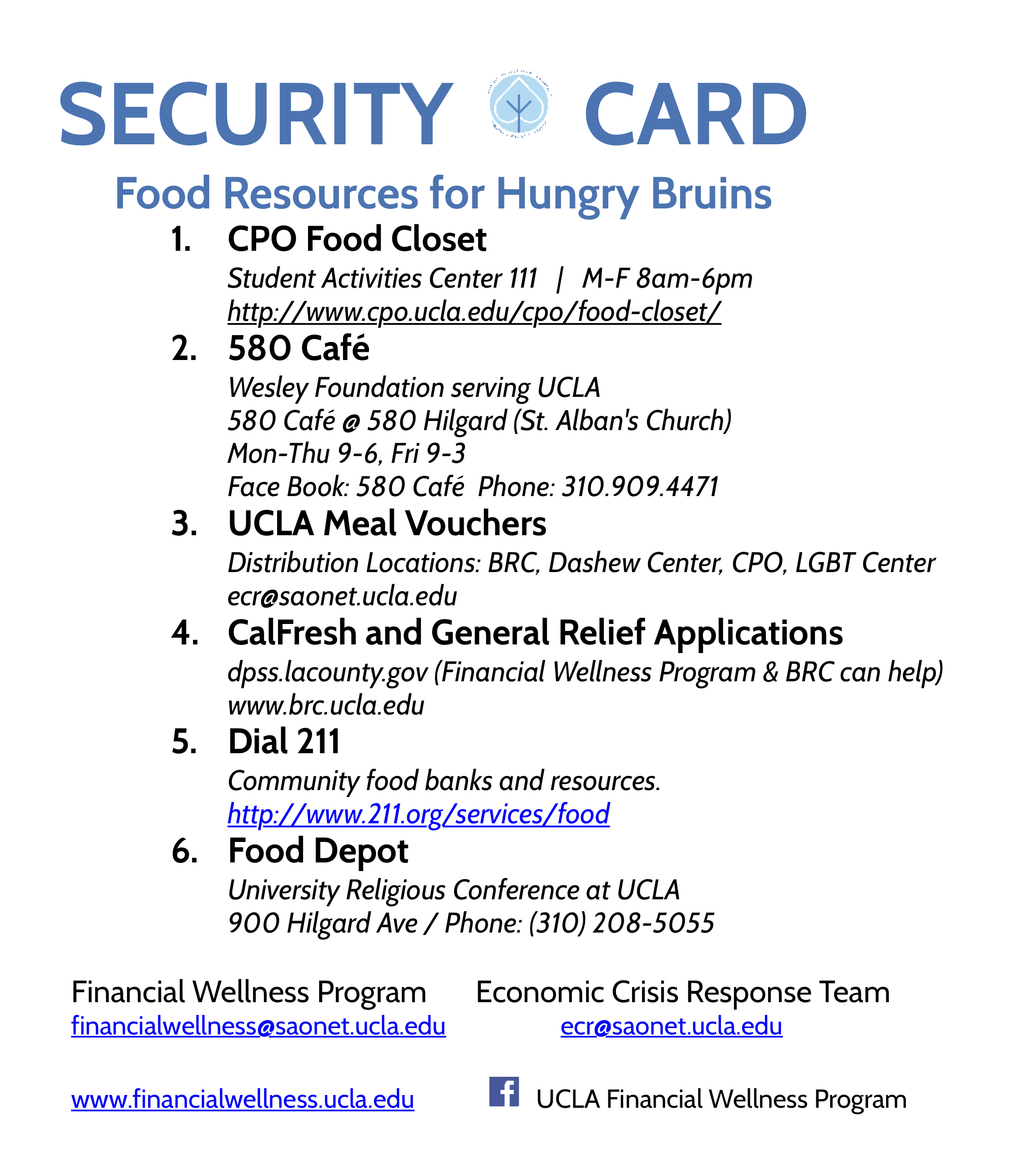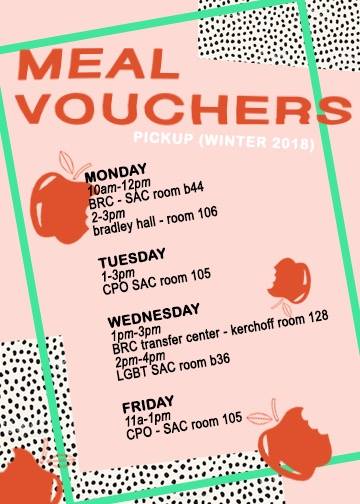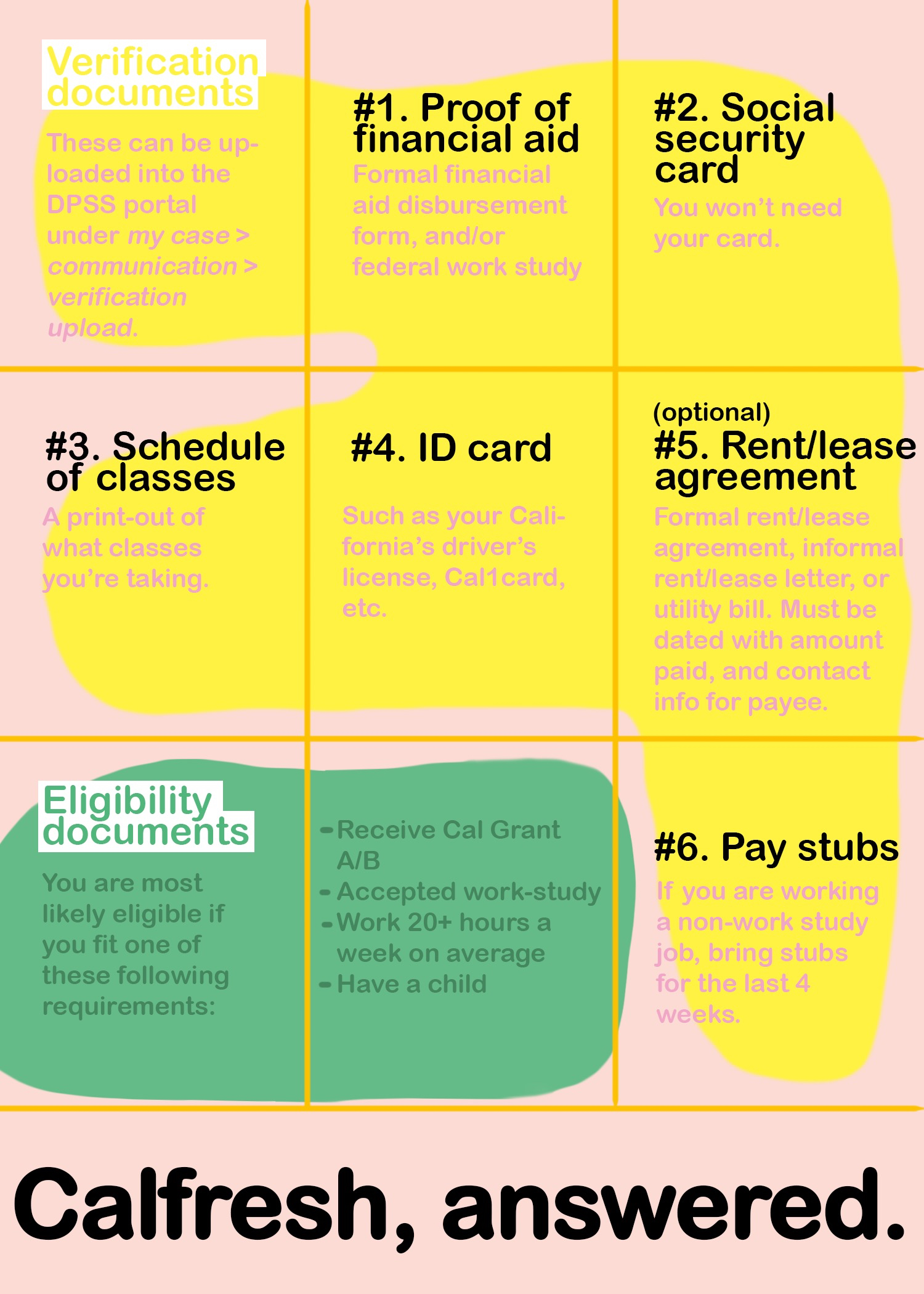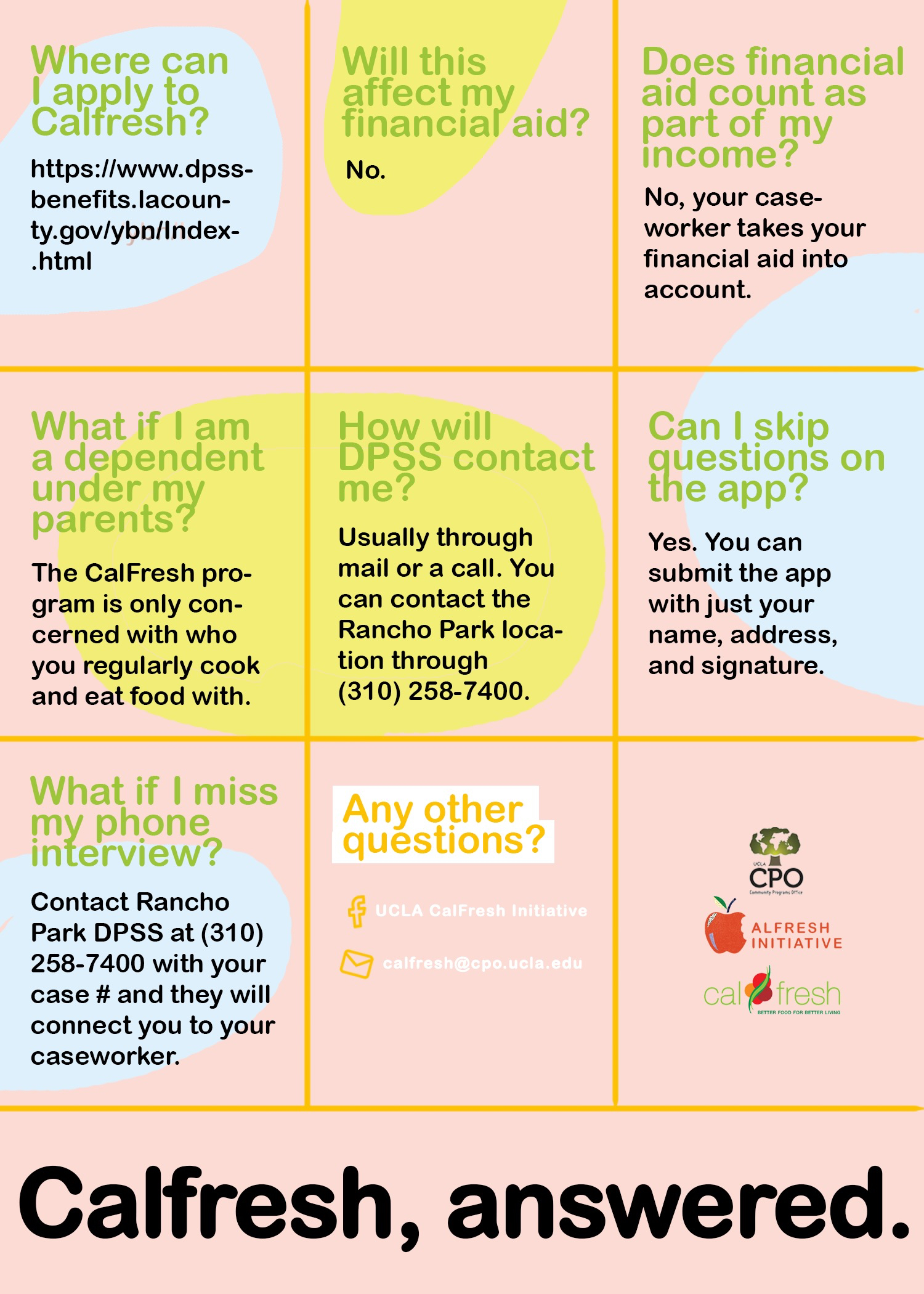Food Security on UCLA’s Campus
We often don’t think of food security as being an issue for college students. With dining halls and plenty of on campus restaurants, it would seem as if food is available to all students at all times. However, according to a 2016 study, 19% of students surveyed indicated having “very low” food security, while another 23% had “low” food security. Food security, according to the United Nations, exists when everyone has economic, physical, and social access to nutritious food. This means over 40% of the UC student population struggles to obtain nutritious food regularly.
From the same 2016 survey, only about 17% of the students received information on resources available, either on campus or in the community, to help combat food insecurity. Thus, this article strives to explain the variety of resources for UCLA undergraduate or graduate students, as well as staff and faculty, who may be experiencing food insecurity.
Some programs on UCLA’s campus are geared specifically towards students. For instance, the Economic Crisis Response meal voucher program sets aside a certain amount of meal vouchers, which can be used in the dining halls, every year for students in need. These meal vouchers can be picked up at the LGBT Center, Dashew, Bruin Resource Center (BRC), Community Programs Office (CPO), and the Transfer and Veteran student centers. Swipe Out Hunger at UCLA helps to enrich this program by collecting unused dining hall swipes at the end of each quarter and converting those swipes into meal vouchers.
The CPO Food Closet is another student-oriented resource on campus, which can be found in the Student Activities Center (SAC), room 111. Founded in 2009, the Food Closet aims to gather uneaten food from events, that would normally go to waste, or donations, and redistribute it to students who may be in need. The Food Closet is open Monday through Friday from 8am-6pm.
CalFresh, a California-government sponsored resource, is available not only for students, but for faculty and staff who are eligible as well. When enrolled in CalFresh, you could receive up to $194 a month for groceries which can be spent at places like Ralph’s, Whole Foods, and Trader Joe’s. While CalFresh is a state-wide resource, UCLA has its own CalFresh Initiative, located in SAC CPO 105E. This initiative, dedicated to enrolling eligible students in CalFresh, also has a Pre-Screening Tool to help you find out if you’re eligible for the program.
There are also many resources just outside of UCLA, like Café 580. Café 580 is located at 580 Hilgard Avenue, just across the street from campus and offers free food, internet, and study space for students. Café 580 also has various events advertised on their Facebook page to provide social connections along with food resources.
The Santa Monica Food Bank is a community resource, also available for UCLA students, staff and faculty. Located at 1710 22nd Street, their goal is to help provide food to low-income families in hopes of alleviating the stress of deciding between buying food or paying rent.
A nationwide resource available to UCLA students, both during their time at UCLA and beyond, is Dial 2-1-1. 2-1-1 provides resources ranging from housing, health and other crises needs. Specifically, it can give information on food pantries and other programs that can help address food insecurity in your community.
UCLA and its surrounding community offers a wide variety of food insecurity resources. While we may not be able to ensure food security for all students, we at least can make sure everyone is aware of the resources available, and hopefully takes advantage of them if they are in need.
To learn more about food security at UCLA, visit the food security page of our website.
Aurora Finley is an undergraduate student at UCLA majoring in English. Along with blogging for the UCLA Healthy Campus Initiative, she is the Sexperts Executive Director for the 2017-18 academic year. She is also a regular volunteer for UCLA’s Habitat for Humanity chapter and blogs for the online UCLA Odyssey community.
